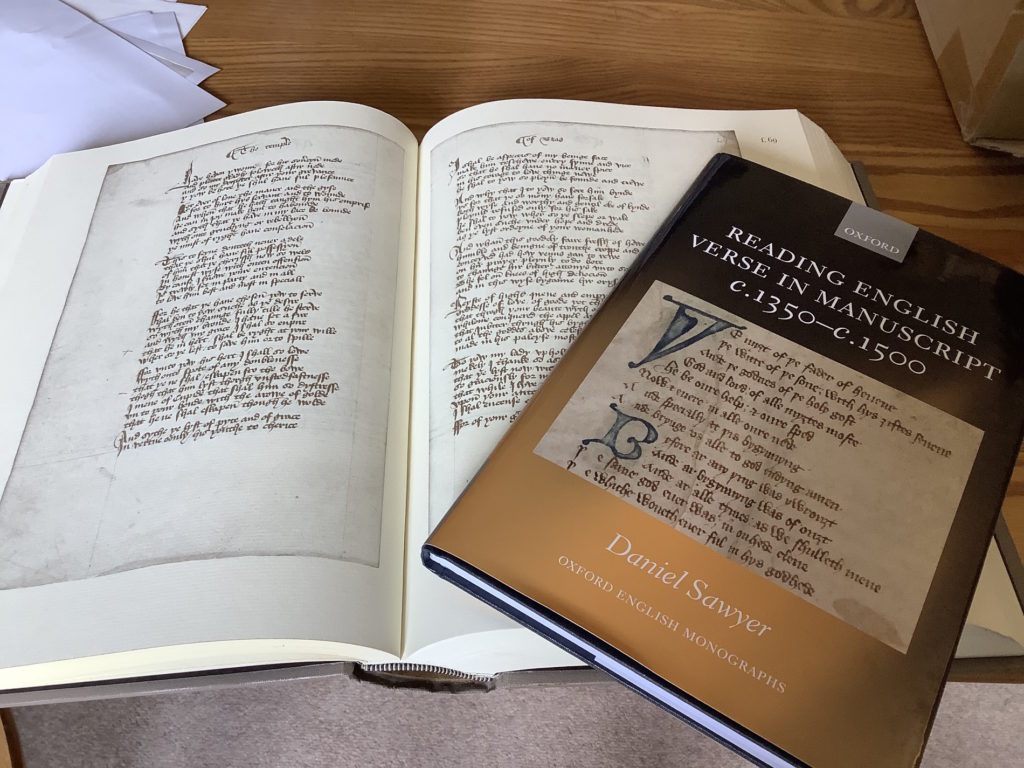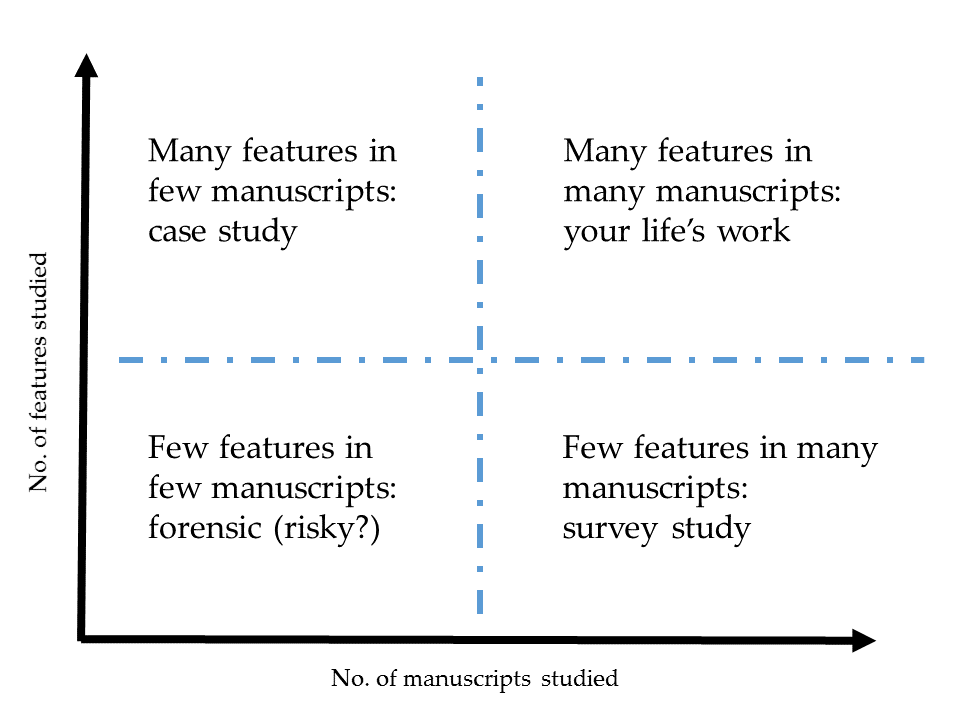Just out from me in Textual Practice, ‘Manuscript Canonicity‘: an article exploring how manuscripts themselves can generate prestige in present-day scholarship. This article’s published open access!…
Leave a CommentTag: manuscript studies

My new book was published this month. Reading English Verse in Manuscript c.1350–c.1500 can be ordered from OUP here, and, in the UK, at the time of writing, Blackwell’s are selling it for about £5 less.
This is in a sense ‘the book of the doctorate’, but it’s changed a great deal since I received my DPhil. The book is shorter, clearer and punchier. It draws on a significantly larger mass of evidence and corrects various errors and fuzzinesses in the doctoral work. And none of it has been published elsewhere: this is not a monograph whose most exciting chapter can be found as an earlier article.
Here is the blurb:
Leave a CommentI’m writing up a few more extended thoughts on the joint Early Book Society / John Gower Society conference last week, but for the moment I thought I’d share this useful(?) diagram:

When I was an MSt student preparing to tackle my summative essay on the palaeography and codicology course, Dan Wakelin told the class that it would be best, as a rule of thumb, to study either a few features in many manuscripts, or many features in a few manuscripts. I passed this useful advice on when I taught part of the same MSt course this year. When I came to write my paper for EBS, I realised that this advice was relevant to some of the ways we think about manuscript studies in general, not just when we’re starting out, so I built this diagram.
Leave a Comment